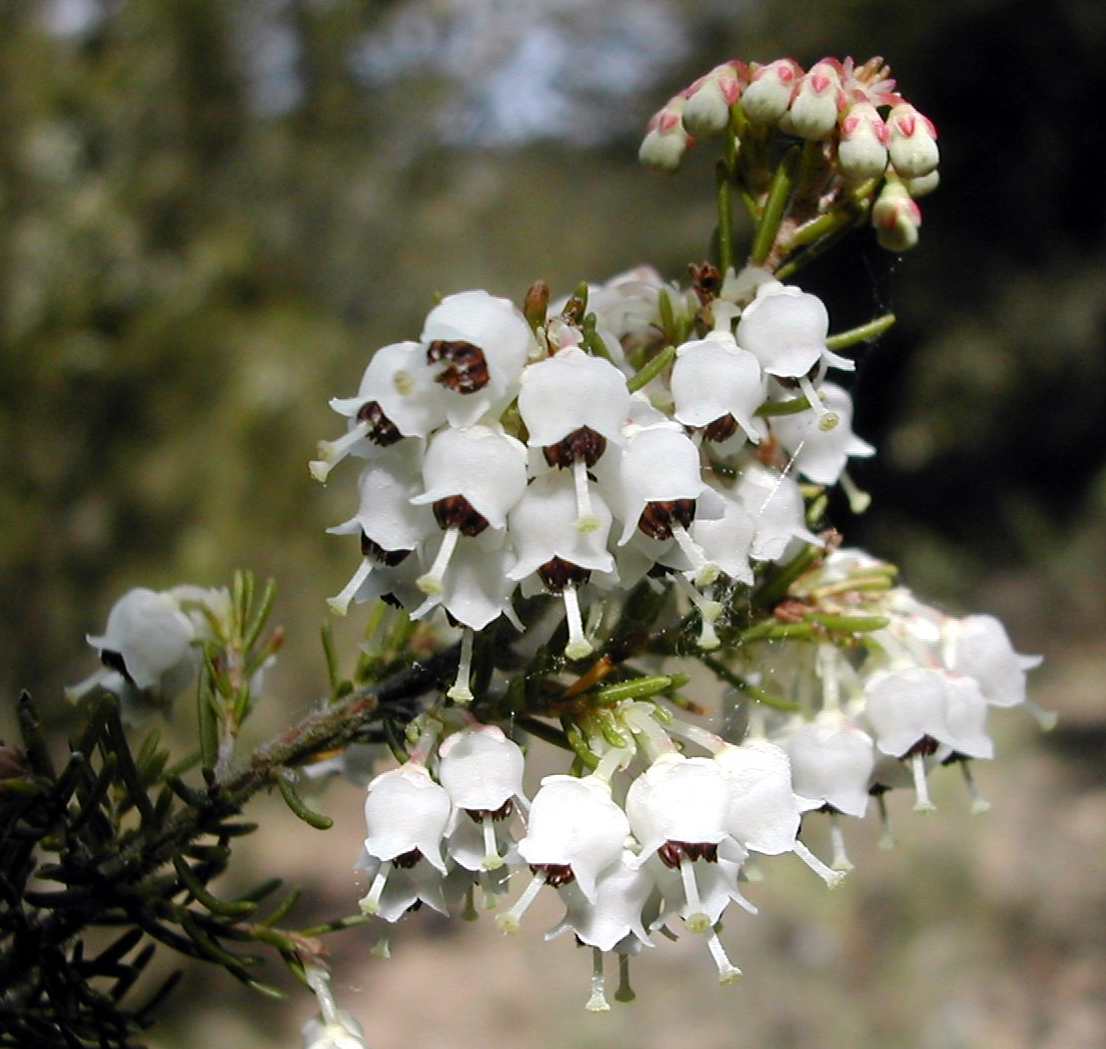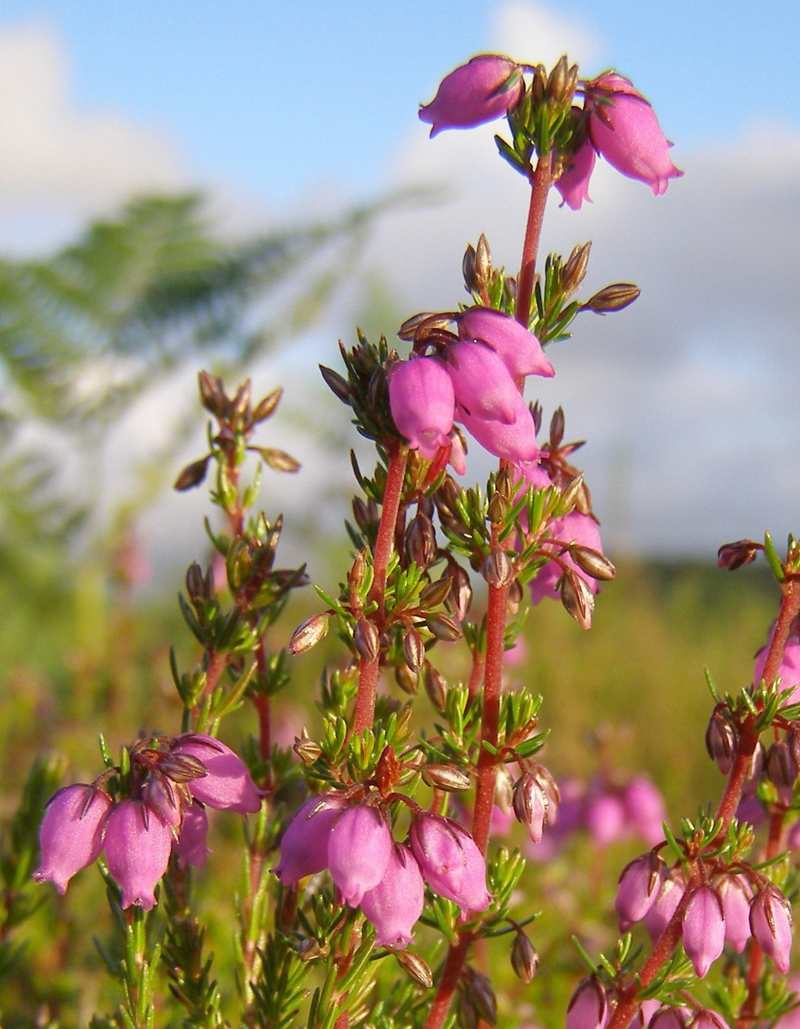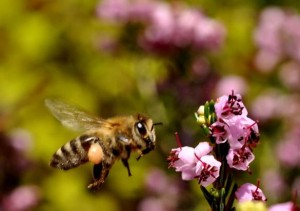Erica Heather honey is the broad term for honey produced from the Erica species of the heath and heather family, Ericaceae. This family includes many other honey plants, such as blueberries, ling heather, cranberries, rhododendrons, strawberry tree and sourwood trees. Erica plants are closely related to common heather, Calluna Vulgaris, the nectar source of what is known as ‘true’ Heather Honey.
There are over 650 Erica species endemic to Europe, the Mediterranean and S. Africa. As a result, it often one of the many nectars found in multifloral honeys. Yet there are several species of Erica that produce distinct single flower honeys in countries ranging from the UK (Scotland), to North Africa;
*test*

|

|

|

|

|
White Heather Honey - Erica Arborea
It has a dark amber color with orange hues that turns light brown when crystallized. It is very fragrant almost pungent spicy, with a woody, caramel aroma. Normally sweet with a strong, sharp, slightly bitter taste. Caramel and cocoa flavor. The aftertaste persists. It crystallizes quickly into a fine smooth texture.
It is well matched with medium to strong cheeses, excellent with aged cheese. Not advised for fragrant teas as its strong flavor will overpower the gentler taste.
Sensitive to rain and weather, production is irregular in some countries. Blossoms in late March to late April and is harvested in May.
Locations: It is found in France, Spain, Italy and North Africa.
Translations: French: Le miel de bruyère blanche, Le miel de bruyère arborescente; Italian: Miele di erica arborea, Miele di erica (may be E. arbora or E. scoparia - also known as, "scopo"); Spanish: Miel de brezo; German: Erica Heidehonig or Erikaheidehonig;
Bell Heather Honey - Erica Cinerea
It is a dark brown color that darkens as it crystallizes. Its has a strong aroma, with woody flavors, slight mint and bitterness. It crystallizes slowly. Often mixed with Cross-leaved Heath (Erica tetralix L). The heather blooms in early summer and harvesting takes place in late August.
Locations: It grows in moorlands, heaths, open wood and is found in UK, W Europe, Germany (Lüneburg Heath), SW Norway, S Portugal and NW Italy.
Translations: French: Miel de bruyère cendrée; Norwegian: Klokkelynghonningen; German: Glockenheidehonig, Irische Glockenheidehonig (may be from Irish heath - Daboecia cantabrica), Erikaheidehonig; Italian: Miele di Erica Cinerea
Snow Heather Honey - Erica Carnea
Also known as Winter or Spring Heath and Erica herbacea.
It is amber colored, turning to a light yellow when crystallized. It has a medium strong, slightly pungent aroma and persistence. The aroma is like caramel, dried fruit and flowers. The taste is fruity, minty, caramel.
This is a beautiful heath that originates in central Europe and is a popular heath in gardens. Blooms in January through April. It grows in grasslands, fens, bogs and is found above 1500 meters in the Alps, Apennines and north of the Balkans, or on dolomitic limestone.
Locations: Italy (Trentino), Germany, Crete
Translations: German: Schneeheide honig; Italian: Miele di erica carnea
Autumn Heather Honey - Erica Manipuliflora
Also known as Erica verticillata or Autumn Heather. It blooms from August to October.
A dark strongly flavored honey, mildly sweet and high in trace minerals. It crystallizes within 2 to 3 months of harvest, the color is lighter with crystallization.
In Greece it is sold as a health food for childhood fevers, hay fever of heather pollen and for adult prostrate infection.
Locations: It is found in the Greece, Turkey and N. Africa.
Translations: Greek: ρεικόμελο (reikomelo); Turkish: Püren Balı
Other Erica Honeys: Erica umbellata and E. australis honeys are present in Spain; Erica multiflora honey is found in Tunisia.
When labeled ambiguously, such as "Heather Honey" or "Le miel de bruyère" you can tell whether it is Erica or Ling honey by simply turning the bottle on its side (assuming it has not crystallized). The Erica honey will quickly flow level, the Ling will take a minute or two to flow. If buying online, you might guess by the country of origin or simply contact the beekeeper.
Heather honey is rich in trace minerals and is traditionally used in the manufacture of gingerbread in France (spice bread - pain d'épices), particularly Bell Heather Honey (Miel de bruyère cendrée), its spicy aromatics enhance the flavor.
Therapeutic It is also used as a diuretic and disinfectant for the urinary tract.
Translations: Italian: Miele di erica; French: Miel de bruyère erica; Spanish: Miel de brezo
Image Credits:
Erica arborea, by en:User:David.Gaya Erica Heather Image is licensed under the Creative Commons Attribution-Share Alike 2.5 Generic license.
Erica Cinerea - Some rights reserved by treehouse1977
Erica herbacea - Some rights reserved by pe_ma
Erica manipuliflora by μούργος
Erica umbellata by Javier Marin





Hello, I am interested in acquiring seeds of erica arborea of which I found a picture on your website and which is apparently one of the ericas which you use for honeymaking. The erica carnea (snow erica) is particularly lovely. I am not sure in which country you are. Here in South Africa we get honey made from orange tree blossoms which also has a very nice orange flavour. Your info is very interesting.
Dear sir/madam
I am curious about honey from Erica Cinerea. We harvest here on the west coast of Norway honey from what we traditionally believe is Erica tetralix. However, cinerea and tetralix grows in the same places here, and blooms at the same time. We have redused abounts of both, but we certainly do harvest a very unique honey, acidic and highly aromatic. My question is: I would like to get hold of a Erica cinerea honey to compare it with hours. Could you inform me where to buy such.
Best wishes – Ragna
Hi Ragna:
Definitely one of my favorite honeys! To find Cinerea, I searched “Erica cinerea heather honey france” which is also a huge producer of Erica (Heather) honey. I can’t vouche for this company but it looks very credible. Erica Heather Honey | Le Rucher de l’Ours
…Scott
Thank you very much Scott. I have now ordered Cinerea honey. Very exited.
Ragna
Hei Scott
I have now received some Erica honey samples. Your conteáct: Le Rucher de l´Ours have Calluna vulgaris (which is abundant in Norway, we harvest several tonns each year of this honey), and also Bruyere Blanche, ie Erica Arborea. I believe its safe to say that Erica cinerea gives what in english is called Bell heather honey. I found this linked in. This does not taste as described Erica cinerea honey should taste like. Not easy! Ill keen on searching. Best wishes – Ragnahttps://www.hbhoney.com/product-page/humble-bee-bell-heather-honey